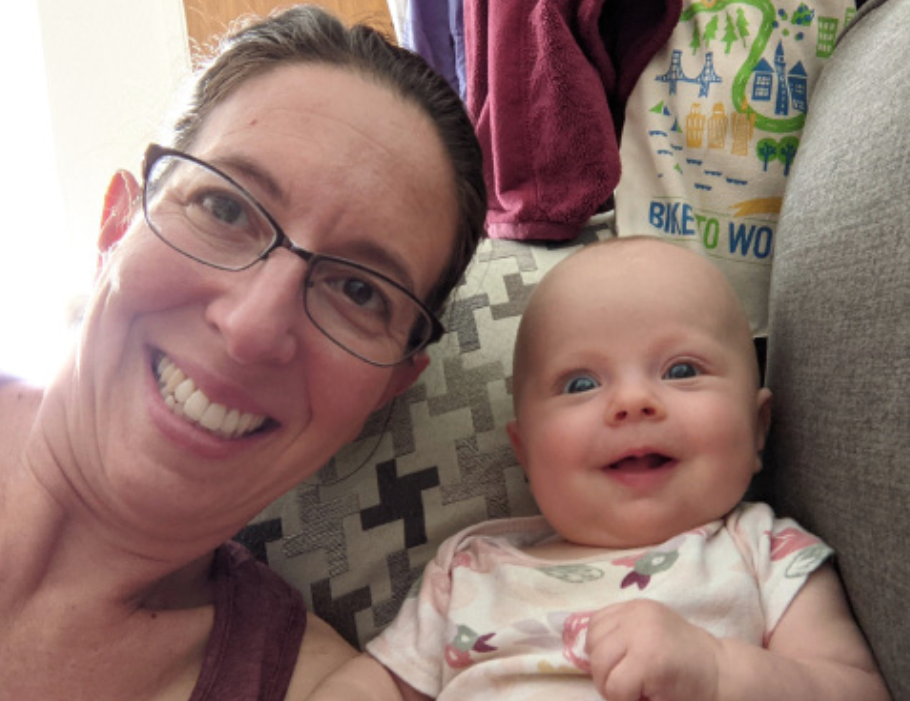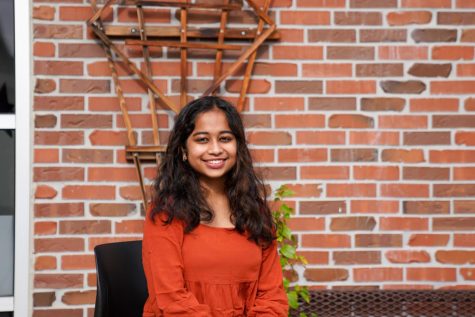Staff baby boom leads to long-term substitutes
Exploring staff and students’ reactions to long-term sub situations
Photo by Hilary Barron | Used with permission
Social Science teacher Hilary Barron shares a photo of her daughter, Elizabeth Julien. Photo by Hilary Barron | Used with permission
October 3, 2021
Although COVID-19 has caused a national decrease in the population of babies, FUHSD has recently seen an increase in the number of faculty members taking maternity and paternity leave. In the past year, approximately 11 teachers have taken time off related to having children, compared to six from the 2020-21 school year during August.
For these teachers, taking time off of school is a concern. While the federal government guarantees 12 weeks of unpaid family leave, the California Family Rights Act provides approximately a minimum of 50% of the teacher’s weekly salary for 12 weeks. Social studies teacher Hilary Barron decided to take the full 12 weeks to spend time with her 4-month-old baby — from the start of school to Nov. 4.
FUHSD guarantees a maximum of 10 days of paid sick leave per year, paid in full during a teacher’s time off of school. Each year, the unused days carry over to the next school year, meaning these sick days can accumulate for teaching staff and can be used during a teacher’s federal maternity leave to provide 100% of regular pay.
“It’s been honestly really nice to have a break after a year and half of crazy pandemic teaching, but I’m trying to really enjoy it,” Barron said. “My baby was born in June a week after school got out, so I remember as my teacher friends were starting to get ready for school, I [felt] like I was just calming down.”
French teacher Sarah Finck took her maternity leave starting in May 2021 to spend some time with her 3-month-old daughter Charlotte. While this has been a considerable change for Finck, she believes it was something that she needed.
“Right now, I feel like it’s exactly what I should be doing,” Finck said. “I would find it hard to envision not having professional activity in my life, but right now, it feels like an extension of summer break.”
French teacher Sarah Finck
For Finck, the experience of staying home has been enhanced by the lenience that COVID-19 provided for certain individuals with the ability to work remotely, such as the ability to spend more time with family.
“My partner is working from home still, so it’s kind of a luxurious situation of maternity leave where I’m not all alone at home all day,” Finck said. “We could have lunch together, and he can hold the baby for a second.”
Although Finck isn’t working, she still involves herself in school-related tasks such as responding to emails and communicating with students whenever she gets the chance to. However, she believes that the transition of coming back next semester might be challenging for her.

“I think it’s going to be a shock to [my] system, trying to juggle having a child and working,” Finck said. “I am aware that that’s going to be really different, [and] I hope that I’ll be able to be even more productive at work during the work times so that when I leave, I can leave that aside.”
While students like sophomore Kaavya Ahuja have said they are comfortable with long-term substitutes, Ahuja, who has Finck for French 2, also believes that the transition from having the substitute to switching back to her original teacher will be somewhat challenging.
“We spent so long with this substitute, and we got to know her,” Ahuja said. “When we’re finished with actually getting to know her, right then we get to the new teacher, and we have to do it all over again so it’s kind of hard.”
However, Finck thinks otherwise, believing the long-term sub situations bring students a positive new change.
“I think it’s good for them to have somebody else,” Finck said. “To see that there are other people out there, it’s probably refreshing for them not to have me all the time.”





























